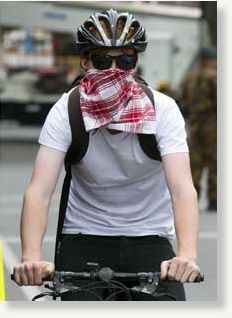
Gusts of 70 kilometres per hour (44 mph) buffeted emergency crews in the ruins of New Zealand's second largest city, hampering the search for bodies amid fears of masonry dislodging and trees toppling.
"In some places it was difficult to stand up, you'd look across the city and see these enormous clouds of dust blowing down the main avenues -- it's been a terrible day," mayor Bob Parker said.
The winds stirred an estimated 200,000 tonnes of silt and sand pushed up from the ground after the power of the February 22 quake loosened the bond between soil particles in a process called liquefaction.
Search and rescue teams donned respirators and dodged flying sheets of corrugated iron as they raked through the wreckage, while supplies of facemasks were rushed to Christchurch for residents.
The death toll from last week's 6.3-magnitude tremor stood at 160 Wednesday, climbing toward a final tally that police expect to exceed 240.
About 400 relatives of the dead visited the city's worst-hit sites in what Parker said was a difficult and emotional trip that he hoped would bring them some closure.
Rescuers have conceded they do not expect to find any more survivors, turning attention to questions about why the damage inflicted on the city in the 6.3-magnitude tremor was so severe.
Up to a third of the downtown area faces demolition and two office blocks concertinaed in the violent 15-second shake and were completely destroyed.
One of them, the Canterbury Television (CTV) building, housed an English language school attended by Asian students, predominantly from Japan and China, more than 60 of whom are presumed dead in its ruins.
City engineers deemed both office blocks safe after a major 7.0 tremor last September which miraculously resulted in no deaths in Christchurch, a result attributed at the time to New Zealand's stringent building standards.
Christchurch City Council building manager Steve McCarthy said the quake was a unique seismic catastrophe and it was lucky more office towers had not fallen.
"If you're are apportioning blame, maybe Mother Nature has a part to play and we just can't control that," he told Radio New Zealand.
In the wake of the disaster, New Zealand has assured Japan and China it will "vigorously" investigate why the CTV building failed, with Prime Minister John Key saying the dead students' families were entitled to answers.
McCarthy said city engineers conducted external reviews of both office blocks after the September quake, clearing them for occupation but telling the owners they needed further structural checks.
"It was up to the building owners to do that," he said, adding that he believed they had done so but the council did not follow up, partly due to a lack of resources.
He said last week's quake, though weaker in magnitude than September's, was shallower and closer to the city centre, hitting it with such force that it hurled buildings upwards, as well as side-to-side, before dropping them.
"It lifted buildings and people up, then after that period it deposited them back down as hard as it could, at two times the force of gravity, and buildings, some buildings, haven't been able to withstand that," he said.
Source: Agence France-Presse



Reader Comments
to our Newsletter